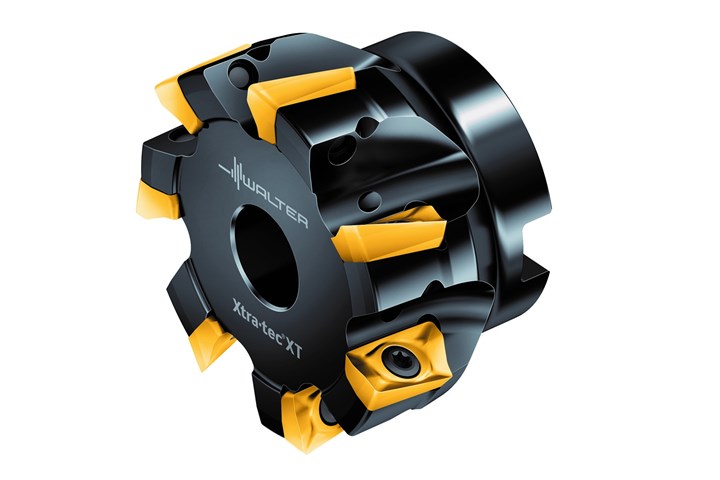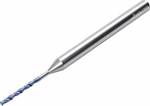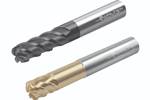Shoulder Milling Cutter Handles Versatile Operations and Materials
Walter USA’s Xtra-tec XT M5130 is engineered for processing reliability, cost efficiency and increased production.

Photo Credit: Walter USA
Walter USA introduces the Xtra-tec XT M5130 shoulder milling cutter, a universal tool that the company says has been engineered for high productivity, improved stability and process reliability. It handles a wide array of machining operations including face milling, shoulder milling, ramping, pocket milling and circular interpolation operations. According to Walter, the mill is best suited to machining steel, stainless steel, cast iron, non-ferrous material and materials with difficult cutting properties.
This wide range of uses, notes Walter, in addition to the cutter’s 90° approach angle which decreases the need for finishing operations, results in lower tooling and administrative costs. Further, Walter Tiger·tec cutting tool materials, the high number of teeth and small indexable inserts are also said to makes the tool ideal for workpieces with small machining allowances.
The Xtra-tec XT M5130 shoulder milling cutter features two pitches for different applications, and a stable cross section resulting from the modified installation position of the indexable inserts. Available in diameters of 0.5-6.0 in. (10-160 mm), and geometries F55, G55/G65, K55 and M85/K85, the Xtra-tec XT M5130 is ideal for the energy industry, die and moldmaking, as well as general metalworking.
Related Content
-
Building Molds: Most Popular Reads of 2024
Dive into the most-viewed content for building your mold, including topics such as cutting tools, EDM, hot runners, additive manufacturing, mold materials, machining and mold components.
-
How to Overcome Deep-Hole Drilling Obstacles in Mold Machining
Keep up with the newest tooling innovations to overcome holemaking and finishing challenges.
-
How to Overcome Cutting Tool Vibration
Advanced indexable milling cutting tool design provides secure, predictable machining, increased metal removal rates, reduced cycle times and fast changeovers.
.png;maxWidth=970;quality=90)






.png;maxWidth=300;quality=90)




.png;maxWidth=970;quality=90)